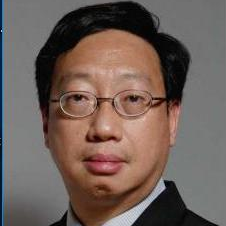Advanced Electrification for Transportation and Built Environment
A special issue of Energies (ISSN 1996-1073).
Deadline for manuscript submissions: closed (15 March 2017) | Viewed by 22880
Special Issue Editor
Interests: battery; engineering; electrical and electronics; energy storage; energy conversion; energy
Special Issues, Collections and Topics in MDPI journals
Special Issue Information
Dear Colleagues,
Electrification is the process of enabling the powering of loads using electricity. Regarded as the greatest engineering achievement in the last century, it is still an ever-evolving process, as factors of energy sources, distribution infrastructure, technologies, and human social values change with time. The advent of high efficiency power electronics is changing the way in which electricity can be distributed to consumers. The concern with sustainability and environment is pushing for more renewable energy sources to be incorporated in the electrification of the built environment. Electrical systems and electrical propulsion are increasingly adopted in transportation systems in all three sectors of land, sea, and air. New business models and social values are dictating how electrification is evolving. This Special Issue will publish high-quality peer-reviewed papers on the latest technologies that are currently advancing electrification in land, sea, and air transportation, as well as in the built environment. The topics include, but are not limited to, the following:
- Electric power distribution in more-electric aircrafts
- More electric engine technologies for more-electric aircrafts
- Electrical propulsion for ships
- Marine power systems and alternative maritime power (cold ironing)
- Electric and hybrid-electric railway systems
- DC and hybrid AC/DC power distribution in transportation and built environment
- Intelligent nano-grids in buildings and community-scale micro-grids
- High density power electronics
- High ambient temperature power systems
- Energy storage systems for transportation and built environment applications
- Condition monitoring and health prognosis for power systems components
- Distributed generation and renewable energy sources
- Electric vehicles and charging infrastructure
- Deregulated electricity markets
- Phasor measurement units (PMU) and micro-synchro-phasors technologies
Prof. Dr. King Jet Tseng
Guest Editor
Manuscript Submission Information
Manuscripts should be submitted online at www.mdpi.com by registering and logging in to this website. Once you are registered, click here to go to the submission form. Manuscripts can be submitted until the deadline. All submissions that pass pre-check are peer-reviewed. Accepted papers will be published continuously in the journal (as soon as accepted) and will be listed together on the special issue website. Research articles, review articles as well as short communications are invited. For planned papers, a title and short abstract (about 100 words) can be sent to the Editorial Office for announcement on this website.
Submitted manuscripts should not have been published previously, nor be under consideration for publication elsewhere (except conference proceedings papers). All manuscripts are thoroughly refereed through a single-blind peer-review process. A guide for authors and other relevant information for submission of manuscripts is available on the Instructions for Authors page. Energies is an international peer-reviewed open access semimonthly journal published by MDPI.
Please visit the Instructions for Authors page before submitting a manuscript. The Article Processing Charge (APC) for publication in this open access journal is 2600 CHF (Swiss Francs). Submitted papers should be well formatted and use good English. Authors may use MDPI's English editing service prior to publication or during author revisions.
Keywords
- electrification
- more-electric aircrafts
- electric marine propulsion
- electric railways
- smart power grids
- power distribution
- nano-grids
- energy storage
- power systems
- power electronics





